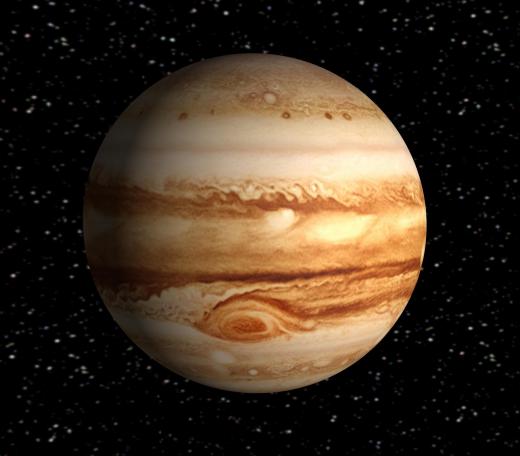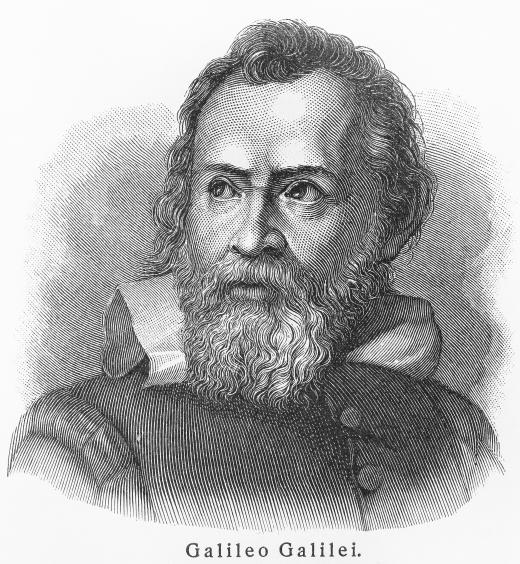What are the Galilean Moons?
 Michael Anissimov
Michael Anissimov
The Galilean moons are Jupiter's largest four moons, discovered in 1610 by the Italian astronomer and physicist using one of the earliest telescopes. The discovery of the Galilean moons, and the implications about the universe they signified, are considered a landmark event in the Renaissance. By discovering the first moons orbiting around another planet, Galileo showed that other planets possess their own gravity, supporting the Copernican heliocentrist theory published 67 years earlier.
The Galilean moons were, in order of size: Ganymede, Callisto, Io, and Europa. Ganymede has a diameter of 5262 km, Callisto is 4820 km, Io is 3660 km, and Europa is 3121 km. In order of distance from Jupiter, they are Io, Europa, Ganymede, and Callisto. Ganymede is even larger than the planet Mercury, although its mass is only about half. Callisto approaches Mercury in size. For comparison, our own Moon is 3474 km in size, making it only larger than Europa.

Along with the Moon, Saturn's Titan, and Neptune's Triton, the Galilean satellites make up the seven largest satellites in the solar system, sometimes called "the Big Seven." They are larger than all other satellites in the solar system by a significant margin. Looking at the variation between these satellites is a good way of learning about different planetary geographies and histories.

To describe the Galilean moons in terms of appearance: Io, the closest to Jupiter, looks like a yellow pizza, because it is covered in erupting volcanoes and sulfur dioxide frosts. Ganymede: the largest, which looks like a giant shaded sandstone, including huge sectors of ice smashed by asteroids. Callisto: a very dark moon with bright splotches of white, barraged by so many craters that no new one can be created without erasing one of the more ancient. And Europa: the smallest, a mostly white sphere with brown linea criss-crossing its surface, and some large brown smudges.
The Galilean moons are some of the most impressive celestial sights that can be observed with a high-end telescope. Although huge, any one of these moons could be swallowed up in Jupiter's Great Red Spot.
AS FEATURED ON:
AS FEATURED ON:














Discussion Comments
Wow! These moons are so cool! I saw them last night through a telescope!
I would love to be able to make my own telescope and be able to try and recreate what Galileo did in order to see the moons he observed. I would like to know how much time and effort that he put into creating his telescope in order to see this moons and discover them.
I bet that even if I used materials that did not exist in the times he did I would have quite a bit of trouble trying to create a telescope powerful enough to see the moons.
@stl156 - I completely agree with you. I think that someone four hundred years ago creating such a telescope to be able to see something so far away is an incredible achievement in man made technology. Even for telescopes today, for amateur stargazers, Jupiter is usually the extent of how far someone can see something and that is because of its immense size as a planet.
The moons themselves are quite small and hard to see even in these telescopes, but once you focus on them you are able to see the same thing that Galileo saw in 1610 and have the exact same feeling that he had when he saw such a sight with something he created.
@jcraig - When I go out with my telescope the first thing I think about when I look at Jupiter is how in the world did Galileo in the 1600's possibly create a telescope that is able to see something so far away. Even in my telescope, which cost up around one thousand dollars, the Galilean moons are very hard to see and your have to really squint when looking at Jupiter in order to see them.
I do not see how it is possible for a man living over four hundred years ago to be able to create such a man made device that could see something so far away and I find this one of the most impressive things when I read about star gazers and the astronomers of the past.
Whenever I take my massive telescope out at night to look at the stars, I usually first look to try and find Jupiter and the Galilean moons.
The Galilean moons are quite a sight to see through a telescope and it is quite amazing to be able to see something so far away through something that anyone could be able to buy. I can understand seeing Jupiter due to its immense size, but it is possible to see the Galilean moons through a telescope and be able to see their orbit around the planet.
According to Quantum Theory we exist in this Universe and 10 to the 500th power of alternate Universes, which are just as real as the one we are in now.
So many of us do not know the history or the facts associated with the universe including the earth part of it.
If ignorance is bliss, then we must have a blizzard-in spite of global warming.
Donald W. Bales
Post your comments